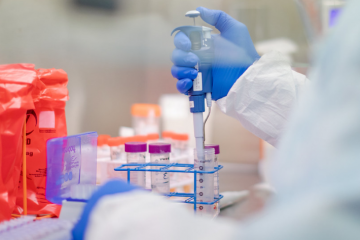Biosafety Risk Assessment: A Brief Introduction to Compliance
An article to help you achieve compliance by enabling you to understand the rules and requirements that need to be taken into account for a successfull biosafety risk assessment. Important information if you are starting a bioscience, biotech or pharmaceutical laboratory.
Written By Dr Shurene Bishop Simon, Director of Bishop Simon (A health, safety and biosafety consultancy)
When scientific organisations decide to undertake work that involves the use of bioagents, they will need to characterise their projects according to risk levels and identify whether special considerations are needed. This article provides a snapshot to help with the decision process.
A necessary place to start is to identify the hazard group of the bioagents to be used. Hazard groups range from 1 to 4, and the level of risk increases accordingly. Most often work involving high hazard groups will need to be conducted at a sufficiently high level of containment. For example, work with a hazard group 2 organism is usually conducted at containment level 2. There are exceptions to this rule, and it is important to know what these are. Hazard groups can be identified by checking The Approved List of biological agents (https://www.hse.gov.uk/pubns/misc208.pdf). Once determined, ensure that the laboratory complies with requirements under The Control of Substances Hazardous to Health Regulations (https://www.hse.gov.uk/pubns/priced/l5.pdf). You will also need to notify the Health and Safety Executive (HSE) of your intention to use hazard group 2, 3 and 4 bioagents. This information is available in Schedule 3 of the regulation.
Consideration must also be given to whether genetic modification (GM) will be carried out and whether GM regulations apply. There are two sets of GM regulations: one for contained use and the other for deliberate release. This article focuses on contained use. The Genetically Modified Organisms (Contained Use) Regulations classifies activities into four groups: class 1 to class 4. The level of risk increases from 1 to 4 and is based on the ability of the genetically modified organism’s risk to human health and the environment. Some essential requirements when GM work is to be carried out are; (1) Notify the HSE of intention to use the premises to conduct contained use work; (2) Notify the HSE of intention to use the premises to conduct class 2, 3, and 4 work; and (3) Class 1 activity must be reviewed by a competent individual (for example a biosafety officer) whilst activities above class 2 must be reviewed by a GM Safety Committee. These requirements are not an exhaustive list and a useful resource for further information is https://www.hse.gov.uk/pubns/priced/l29.pdf.
Organisations must also be mindful of biosecurity requirements. Biosecurity in a laboratory environment are measures to prevent unauthorised access, loss, theft and misuse. Biosecurity in other contexts is to prevent spread of disease and introduction of exotic or alien organism into the local environment. Biosecurity regulations to be mindful of are the Specified Animal Pathogen Order, those regulated by the Animal and Plant Health Agency, and Schedule 5 of the Anti-Terrorism Crime and Security Act. An effective way of ensuring that biosecurity risk is identified is to devise a biological risk assessment template that will capture this information and provide staff with biosafety awareness training. It is important that work does not commence until all authorisations are received. If in doubt organisations must seek advice from a biosafety professional who can help them to fulfil these compliance requirements.
For more information contact Bishop Simon
“Biosafety: A brief introduction to compliance” can be found on page 7.
